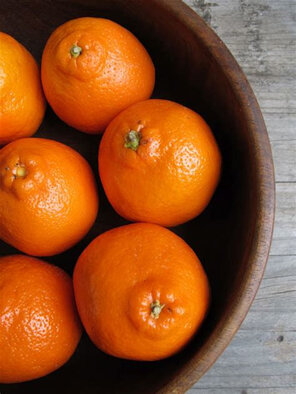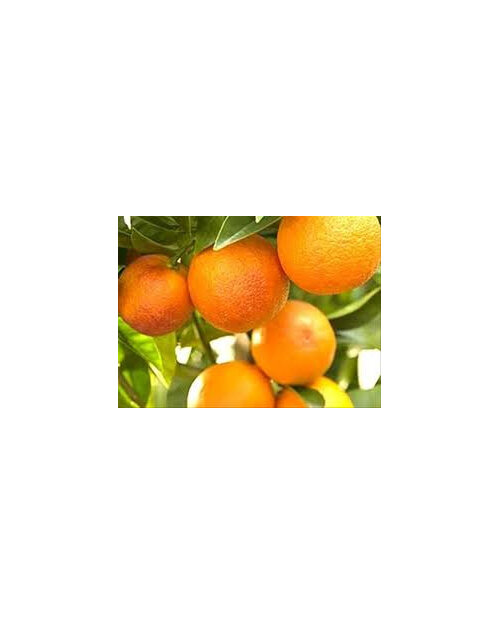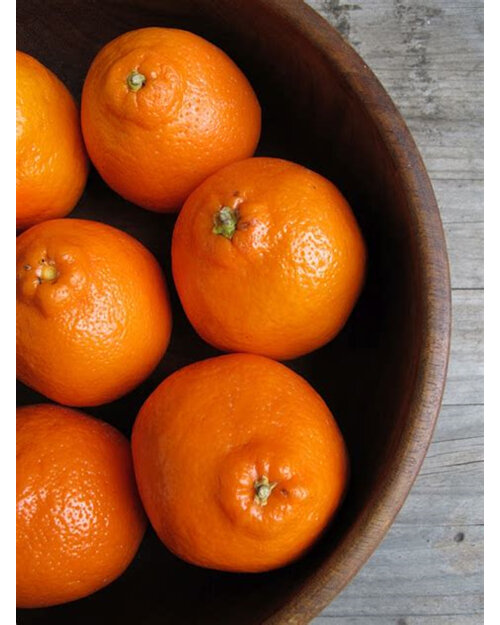IMPORTANT! If ordering for delivery outside of Timaru, please add Frozen Chiller Pack(s) to your order HERE
NZ Navel - Juicy and sweet oranges make the perfect snack and add a special tang to many recipes; it is no wonder that they are one of the most popular fruits in the world. Oranges are generally available from winter through summer with seasonal variations depending on the variety. Oranges are round citrus fruits with finely-textured skins that are, of course, orange in color just like their pulpy flesh; the skin can vary in thickness from very thin to very thick.
Sun-ripened sweet & juicy NZ New Season Oranges & Tangelos their citrusy cousins. Not only use the flesh of the organic NZ citrus in your smoothies, baking, vinaigrettes & sauces but also the zesty skin as also add zing to any recipe.
Tangelos are a mix between your citrus faves usually mandarins x grapefruit or tangerines x grapefruit sometimes oranges but all good sweet & juicy citrus deliciousness.
Health Benefits - Plenty of research online :)
Oranges are one of the most popular fruits around the world. While they are delightful as a snack or as a recipe ingredient, for many Americans, it is their juice that is most associated with good health, having a reputation for being an integral part of a healthy breakfast.
Oranges are round citrus fruits with finely-textured skins that are, of course, orange in color just like their pulpy flesh. They usually range from about two to three inches in diameter.
Oranges are classified into two general categories—sweet and bitter—with the former being the type most commonly consumed. Popular varieties of the sweet orange (Citrus sinensis) include Valencia, Navel and Jaffa oranges, as well as the blood orange, a hybrid species that is smaller in size, more aromatic in flavor and has red hues running throughout its flesh. Bitter oranges (Citrus aurantium) are oftentimes used to make jam or marmalade, and their zest serves as the flavoring for liqueurs such as Grand Marnier and Cointreau.
History
Oranges originated thousands of years ago in Asia, in the region from southern China to Indonesia from which they spread to India. Although Renaissance paintings display oranges on the table in paintings of The Last Supper, the assumption that they were grown in this region at this time seems to be erroneous since oranges were not cultivated in the Middle East until sometime around the 9th century. Sweet oranges were introduced into Europe around the 15th century by various groups including the Moors, and the Portuguese as well as the Italian traders and explorers who found them on their voyages to Asia and the Middle East.
Orange trees began to be grown in the Caribbean Islands in the late 15th century after Christopher Columbus brought the seeds there on his second voyage to the New World. Spanish explorers are responsible for bringing oranges to Florida in the 16th century, while Spanish missionaries brought them to California in the 18th century, beginning the cultivation of this citrus fruit in the two states widely known for their oranges.
Before the 20th century, oranges were very expensive and therefore they were not regularly consumed, but rather eaten on special holidays. After more efficient means of transportation were developed, and food processors invented methods for utilizing orange by-products such as citric acid and bioflavonoids, the price of oranges dropped, and they could be consumed on a wide scale, as they are today. Currently, the countries that are some of the largest commercial producers of oranges include the United States, Brazil, Mexico, Spain, China and Israel.
How to Select and Store
Oranges do not necessarily have to have a bright orange color to be good. Whether organic or not, oranges that are partially green or have brown russetting may be just as ripe and tasty as those that are solid orange in color. Avoid those that have soft spots or traces of mold.
Choose oranges that have smoothly textured skin and are firm and heavy for their size. These will have a higher juice content than those that are either spongy or lighter in weight. In general, oranges that are smaller will be juicier than those that are larger in size, as will those that feature thinner skins.
Oranges can either be stored at room temperature or in the refrigerator, depending upon your preference. They will generally last the same amount of time, two weeks with either method. The best way to store oranges is loose rather than wrapped in a plastic bag since if exposed to moisture, they can easily develop mold.
Orange juice and zest can also be stored for later use. Place freshly squeezed orange juice in ice cube trays until frozen, and then store them in plastic bags in the freezer. Dried orange zest should be stored in a cool, dry place in an airtight glass container.
Tips for Preparing and Cooking
Tips for Preparing Oranges
Oranges can be eaten as a snack—just peel and enjoy. Before cutting the orange in half horizontally through the center, wash the skin so that any dirt or bacteria residing on the surface will not be transferred to the fruit. Proceed to cut the sections into halves or thirds, depending upon your personal preference.
Thin-skinned oranges can be easily peeled with your fingers. For easy peeling of the thicker skinned varieties, first cut a small section of the peel from the top of the orange. You can then either make four longitudinal cuts from top to bottom and peel away these sections of skin, or starting at the top, peel the orange in a spiral fashion.
Oranges are oftentimes called for in recipes in the form of orange juice. As oranges, like most citrus fruits, will produce more juice when warmer, always juice them when they are at room temperature. Rolling the orange under the palm of your hand on a flat surface will also help to extract more juice.
The juice can be extracted in a variety of ways. You could either use a juicer or do it the old fashioned way, squeezing by hand.
If your recipe calls for orange zest, make sure that you use an orange that is organically grown since most conventionally grown fruits will have pesticide residues on their skin and may be artificially colored. After washing and drying the orange, use a zester, paring knife or vegetable peeler to remove the zest, which is the orange part of the peel. Make sure not to remove too much of the peel as the white pith underneath is bitter and should not be used. The zest can then be more finely chopped or diced if necessary.
How to Enjoy
A Few Quick Serving Ideas
- Healthy sauté onions and ginger, and then deglaze the pan with orange juice. Use this liquid as a sauce for salmon or tuna.
- Orange segments, fennel and boiled beets make a delightfully refreshing salad.
- Gently simmer sweet potatoes, winter squash and orange segments in orange juice. Before serving, sprinkle with walnuts.









